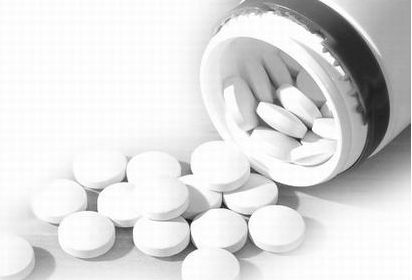What are the effects of taking metamizole?
First, the side effects of metamizole drugs
In the antipyretic family, metamizole has the fastest fever, but the most adverse reactions are also dangerous. The merits of metamizole cannot be denied. Metamizole is a combination of aminopyrine and sodium sulfite. It was used as an antipyretic analgesic in the 1920s. However, since the 1980s, it has been basically no longer used clinically. Metazizzole has been banned in 30 countries around the world, not to mention the United States, Japan, Australia, and even poor countries such as Nepal and Nigeria. However, the result of our country is that metamizole is still in production, small clinics and pharmacies are still selling, and dangerous adverse reaction cases occur frequently.

Metamizole side effects
Some people have metamizole in their homes. It is not scientific to take them with headaches and fever. Metamizole is mainly used for antipyretic fever during high fever. It can also be used for headache, joint pain, dysmenorrhea, etc., but it is generally not used as the first choice. Only in the case of acute high fever, severe illness, and no other effective antipyretic drugs are available. Can be used for emergency heat removal.
Metamizole has been available for decades, and the efficacy of headaches for fever is very obvious. There are many people in rural areas. The long-term use of metamizole is very opposed. It turns out that long-term use of metamizole can lead to a decrease in granulocytes in the human blood. In severe cases, granulocytosis can occur, showing symptoms of fatigue and general malaise. If metamizole eats more, it will cause dependence. Be careful with metamizole.
Because metamizole has many side effects, such as allergies, collapse, leukopenia, renal dysfunction, etc., serious can cause drug-induced aplastic anemia, acute hematopoietic stagnation. Here, if there are symptoms such as fever and headache, it is best not to take metamizole easily. You can use other antipyretic and analgesic drugs instead. When necessary, it is advisable to come to the hospital in time.
Second, metamizole and which drugs will appear
1. The risk of bleeding when the drug is combined with acenocoumarol, anthraquinone, dicoumarin, benzodiazepine, warfarin, eptifibatide, danaparone, low molecular weight heparin increase.
2. When combined with calcium channel blockers, the risk of gastrointestinal bleeding increases.
3. When combined with alendronate, the stimulating effect on the gastrointestinal tract is increased, so caution should be exercised when used together.
4. When the drug is combined with ketorolac, the gastrointestinal side effects increase, and there may be digestive ulcers, gastrointestinal bleeding and/or perforation.
5. This medicine can increase the risk of cyclosporine poisoning. When used together, renal dysfunction, cholestasis, and paresthesia may occur.
6. This drug can reduce the clearance rate of methotrexate, leading to methotrexate poisoning, leukopenia, thrombocytopenia, anemia, toxic renal damage, mucosal ulcer formation and other adverse reactions.
7. When used in combination with lithium, the clearance rate of lithium is lowered, and the plasma concentration is increased, which may cause symptoms of lithium poisoning.
8. When the drug is combined with ofloxacin and levofloxacin, it can inhibit the action of gamma-aminobutyric acid, thereby increasing the risk of seizures.
9. This drug can interfere with the production of prostaglandins, so that the angiotensin-converting enzyme inhibitor, β-adrenergic blocker antihypertensive effect and natriuretic effect are reduced.
10. When combined with loop diuretics and thiazide diuretics, the diuretic and antihypertensive effects of diuretics are reduced.
11. When combined with potassium-sparing diuretics, the latter's diuretic effect is reduced, hyperkalemia may occur, and toxic kidney damage may also occur.
12. When used in combination with sulfonylureas, the metabolism of sulfonylureas is inhibited and the risk of hypoglycemia increases.
Third, the impact of taking metamizole
Although the drug is less irritating to the gastrointestinal tract, it can cause various adverse reactions as follows:
1. Hematology: can cause neutropenia, the incidence rate is about 1.1%, showing acute onset, and severe cases are fatal. It can also cause immune hemolytic anemia, thrombocytopenic purpura and aplastic anemia.
2. Skin: It can cause allergic manifestations such as urticaria, drug eruption, and exudative erythema. In severe cases, exfoliative dermatitis and bullous epidermolysis can occur, and even death can occur.
3. Local reactions: redness and pain may occur at the injection site, and it will subside after a few days. High-dose intramuscular injection can cause severe large-scale aseptic necrosis in the injection, causing toxemia and even death.
4. In some cases, anaphylactic shock may occur after administration of the drug, and even death may result.
5. In the case of intramuscular injection, some patients may have sweating, chest tightness, and sudden drop in blood pressure, leading to collapse.
6. Acupoint injection can cause muscle atrophy, joint dysfunction and so on.
7.metamizole can also cause drowsiness, burnout, headache, nausea, vomiting, dry mouth, urinary discoloration, bronchospasm, pemphigus vulgaris and other adverse reactions.
Send inquiry online For more product information and prices
(Pharmaceutical Ingredients Manufacturer & Supplier & Exporter.)
After sending the online inquiry, we will reply you as soon as possible, if not get any response on time please contact us by Tel or Email. —— Green Stone Swiss
Email: sales@raw-pharmaceutical-materials.comTel: +86 592 5365887
WhatsApp: +86 189 6515 7632
Send inquiry online:

